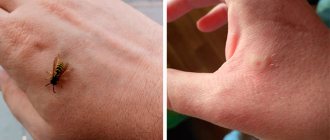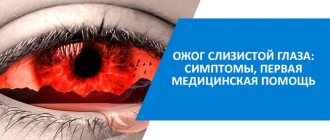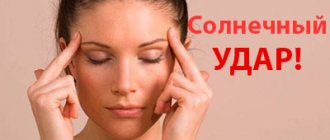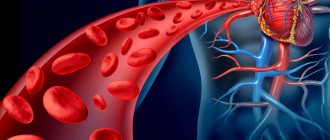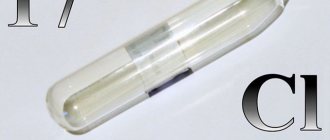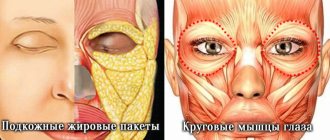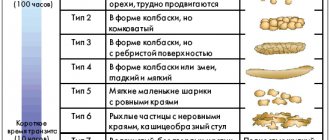Hello everyone, friends!
How do you spend your summer? Do you manage to relax? Or does your angry boss force you to sit in the office late? This article will be useful to all those who spend a lot of time outside.
Picnics with friends, working in the country, fishing, long day walks, trips to hot countries, swimming in reservoirs, blue skies - this is all why we love summer.
The only thing that can darken our mood and unsettle us is sunburn. If this misfortune has happened to you, don’t worry because there are many ways to change the situation for the better.
Treating a sunburn at home will help you reduce pain, inflammation, redness and burning of the skin, relieve swelling and reduce blisters. These methods will help you quickly and painlessly cope with the situation.
Causes
Sunburns usually occur on the face, cheeks, nose, neck, décolleté, arms and shoulders. They are caused by prolonged exposure to the street in the summer and excessive use of solariums.
Factors that increase the risk of burns can be identified:
- Phototypes I and II (people with white or pale skin, blond hair, blue, gray eyes).
- Moles, freckles, a large number of age spots.
- The presence of skin pathologies - acne, herpes, psoriasis, vitiligo, albinism.
- Concomitant diseases - porphyria, xeroderma pigmentosum, lupus and other autoimmune pathologies.
- Heredity - including cases of diagnosing malignant skin tumors in close relatives.
- Taking medications that increase sensitivity to solar radiation - antibacterial drugs Tetracycline and Doxycycline, antiarrhythmic drugs Cordarone, Amiodarone, immunosuppressants, cytostatics.
- Cosmetology procedures the day before - peelings, mesotherapy, cleansing.
- The use of certain types of skincare products - creams with retinol, essential oils of orange, bergamot.
- Increased individual sensitivity to ultraviolet radiation - solar urticaria.
Some materials, such as concrete slabs, sea water, sand, snow, can reflect the sun's rays, so prolonged exposure to them, for example at the sea, can increase the risk of skin damage.
Why does a burn occur and not a tan?
Skin tanning occurs with regular but short-term exposure to ultraviolet radiation. In this case, skin cells begin to intensively produce melanin, which protects tissues from harmful sun exposure. It also gives a dark shade.
With a single long-term exposure to ultraviolet light, the skin burns - the cells do not have time to adapt and are simply destroyed. As a result, the upper layers of the skin peel off.
Which parts of the body burn faster (ears, nose, forehead, back, chest, etc.)
Burns can occur on any part of the body. However, some areas have thicker and therefore less vulnerable skin. That's why they burn out first.
Most often, sunburn occurs on areas of the skin that were not covered with anything. Of these, areas with thin skin (face, ears, neck, chest, etc.) are affected first. And, for example, the back, hips, elbows and knees have thicker skin, so they tan slowly and rarely burn.
Sunburn of the lips is also possible. At the same time, they dry out, as if chapped, cracks appear on them, and sensitivity decreases.
It should be noted that scars on the human body burn faster than the surrounding skin, but the symptoms are not so pronounced. The thing is that scar tissue does not contain cells that form melanin. Therefore, such places require special protection - with the help of clothing or creams with SPF filters.
Moles on the body can also burn. In this case, itching and peeling appear, the mole itself can change its size and shape. This increases the risk of malignant transformation into melanoma.
Those who have acne or some kind of rash on exposed skin should also be aware that in general the manifestations of inflammation are reduced, but the likelihood of the formation of age spots increases. Therefore, it is recommended to use protective creams.
Who is more susceptible
People of different ages react differently to solar radiation. Children in the first year of life are most prone to burns. At the same time, general symptoms come to the fore - increased body temperature, anxiety, poor sleep. Babies' skin is very sensitive to ultraviolet radiation, so they should always wear clothes that cover the entire body when outdoors. Or you need to lubricate the skin with special protective creams.
Younger and older children are less likely to suffer from burns, since they often spend a long time outdoors and their skin is adapted.
Elderly people rarely get burns, but they heal more slowly, and the likelihood of the formation of moles, scars and other marks is higher due to a decrease in the intensity of metabolic processes.
Pregnant women occupy a special place. Due to their hormonal background, they are also at risk for sunburn, so they must follow preventive measures.
Manifestations and degrees of sunburn
The first symptoms may appear half an hour after the person is burned, and within 24 hours the full clinical picture develops. Typical symptoms include:
- Redness. The most characteristic symptom occurs due to the destruction of the epidermis (the surface layer of the skin) and the development of an inflammatory reaction. Redness decreases as cells heal and regenerate.
- Pain, a feeling of tightness, and dryness accompany any sunburn. The intensity of discomfort depends on the degree and area of damage.
- Blisters and blisters. Appear with severe burns, more often in people with light, pale skin. They are not dangerous in themselves and go away on their own within a few days as the skin dries and crusts form, however, accidental damage to them leads to severe pain and increases the risk of infection.
- Swelling, swelling. It is most often observed on the arms, legs, face and neck area. Swelling occurs in people prone to allergic reactions with severe burns.
- Skin itching. Caused by increased individual susceptibility to ultraviolet radiation (photodermatosis), may be associated with healing and restoration of cellular structures.
A rash and small red spots on the skin are not typical for burns and are symptoms of an allergy to ultraviolet radiation. They can occur even after a short stay on the street and are localized in open areas of the body with delicate skin - the forehead, nose, ears, lips, neck, upper back.
Depending on the depth of skin damage, there are several degrees of sunburn.
Grade 1 (ICD 10 code L55.0) is characterized by mild redness and dry skin, which appear 30 minutes to 2 hours after exposure to ultraviolet radiation. There may be slight swelling or swelling at the site of injury. After a few days, the skin begins to peel and peel, pinkish or white spots are found in its place, after a while the color returns to normal.
Sunburn of the 2nd degree (L55.1) is characterized by a more pronounced clinical picture. They are diagnosed if the skin becomes very red and watery blisters filled with a yellowish liquid appear on it (they do not appear immediately, but usually after a day or two). In addition, headaches, nausea, malaise, fever, and chills may occur.
In severe (3 and 4) degree burns, redness with blisters affects more than 60% of the body surface; they appear several hours after exposure to UV rays. The skin is very itchy, painful, swelling of the face, arms, legs, and feet occurs.
Such a lesion is accompanied by general symptoms - dehydration, intoxication, and in severe cases, heart or kidney failure may develop.
How long does it usually take for it to go away?
The speed at which the skin recovers from a sunburn depends mainly on its severity. In the first degree of severity, sunburn usually goes away within 2 to 3 days. With a moderate (average) degree, the skin can recover in 3 to 7 days. The longest recovery time may occur in severe cases. Serious sunburns, on average, resolve in 7 to 12 days without scarring on the skin.
The following factors can affect how long it takes for your skin to recover from a sunburn:
- severity of sunburn;
- timely use of medications;
- correct use of medications;
- area of skin damage;
- the presence of additional skin diseases;
- level of immunity;
- the presence of purulent complications;
- patient's age;
- localization of sunburn on the body.
The rate at which the skin heals from sunburn also depends on many other additional factors (for example, the age of the patient, the area of damage, the location of the sunburn on the body, etc.).
Heatstroke and sunstroke - what are they and what are the differences?
If you tan too much, a person can get heatstroke. In this case, in addition to the above symptoms, the patient develops a fever, chills, muscle pain, headache, dizziness, nausea, vomiting, it becomes painful to swallow, heartbeat and breathing increase. In persons with chronic pathologies, their exacerbation may occur.
It is important to remember that although sunburn can be accompanied by heatstroke, they are not the same thing. The latter can develop not only in the summer on the beach, but also during any overheating or dehydration of the body, for example, in a sauna or bathhouse, an unventilated room, or in a car with the air conditioning turned off.
Heat stroke in the sun is often called sunstroke, which is why the concepts are identical, which is incorrect.
Blister Care
If your skin is peeling after sunbathing, picking at it is not recommended. Also, you should not use various body scrubs and peels for now. Don't go out in the sun - it will only make the situation worse.
If blisters appear, then this is a serious burn. Experts do not recommend covering them; the blisters simply need to be left alone until they heal on their own. Clothes should not rub them.
Don't try to pop the blisters yourself; when the time comes, they will do it themselves. Otherwise, you can get an infection. If they really interfere, consult a doctor. He will assess the situation and perhaps remove them himself under sterile conditions.
Why is sunburn dangerous?
Regular excessive exposure to ultraviolet radiation is dangerous due to premature aging of the skin, the appearance of brown pigment spots, and scars in places of deep damage.
Aggressive solar radiation can lead to eye diseases, cause burns of the cornea, retina, decreased visual acuity and blindness.
Ultraviolet radiation causes mutations in epidermal cells, which provokes their degeneration into malignant tumors. Skin cancer and melanoma occur in areas of the body that are more likely to get sunburned—the chest, face, neck, shoulders, and legs.
The appearance of blisters and the period when the skin peels off during sunburn is dangerous due to the addition of secondary bacterial and fungal infections. In severe cases, they can penetrate the body and lead to sepsis (blood poisoning) and damage to vital internal organs.
What should you not do when you are sunburned?
If you do not know the contraindications for the condition in question, then solving the problem yourself can lead to the fact that only qualified doctors can alleviate the patient’s condition.
What not to do if you have sunburn:
- Rub the burned skin with pieces of ice. This brings instant relief, but the consequences can be really terrible - the damaged epithelium will begin to die, which leads to inflammatory processes and a long period of rehabilitation. By the way, it is likely that even after treatment there will be cosmetic defects on the skin.
- Do not wash damaged areas of the skin with alkaline soap or use a scrub - such an effect on thin skin leads to the development of inflammatory processes.
- Under no circumstances should sunburn be wiped with alcohol or any alcohol-containing products - this causes severe dehydration, and the body already suffers from dehydration.
- If the sunburn occurs in an acute form, then it should not be treated with medical Vaseline or badger/lamb/pork fat. The fact is that these products will clog the pores and the skin will not be able to breathe.
- It is also highly not recommended to pierce blisters or papules on your own in areas of sunburn - with a 98% probability, a secondary infection will develop at the site of skin damage.
- In the acute period of the condition in question, you should not drink tea, coffee and alcoholic beverages - they increase dehydration of the body.
In addition, it is strictly not recommended to stay in direct sunlight even during the recovery period after treatment of a sunburn; in extreme cases, you should wear covered clothing.
Treatment
You can only treat mild sunburns of 1-2 degrees on your own. In other cases and if complications develop, therapy should be carried out only under the supervision of a specialist at home or in a specialized hospital.
To treat skin damage and quickly recover, the following are used:
- Nonsteroidal anti-inflammatory drugs (Aspirin, Analgin, Ibuprom). They have anti-inflammatory, analgesic and antipyretic effects. When treating young children, preference should be given to Paracetamol or Nurofen in the form of syrup.
- Antihistamines (Loratadine, Cetrin, Suprastin, Fenkarol, Erius). Effectively relieve itching and redness of the skin, reduce swelling and manifestations of photodermatosis. These medications must be taken strictly according to the instructions, observing age-specific dosages.
- Vitamins (especially A, E and C) promote rapid tissue regeneration, prevent dryness and excessive peeling of the skin, and prevent malignant degeneration of cells. The dose and duration of taking the drugs is selected by the doctor individually, depending on the area and stage of damage to the epidermis.
Additionally, drugs are used to treat exacerbated chronic pathologies, these can be antihypertensive (Enalapril, Perindopril, Amlodipine, Losartan), antiarrhythmics (Metoprolol, Bisoprolol), antacids (Almagel, Gaviscon), acid-reducing drugs (Omeprazole, Pantoprazole), enzymes (Mezim, Creon ) and other means.
In some cases, medications are used that improve blood microcirculation (Pentoxifylline, Trental, Nicotinic acid) and normalize metabolism (Actovegin).
What are they?
There are several types of sunburn:
- 1st degree burn. Mild redness, itching, and swelling are the main symptoms of the first degree.
- 2nd degree burn. Bubbles appear on the burned areas and gradually fill with liquid. To relieve pain and swelling, special medications are prescribed.
- 3rd degree burn. The blisters begin to crack and peel off in pieces, leaving open wounds that can bleed.
At the last stage, an inflammatory process with bleeding and suppuration is observed on the burned skin. In addition, general health worsens.
What to apply to a burn to heal
To treat sunburn, medications in the form of healing ointments, creams, lotions and aerosols are necessarily used. They allow you to quickly relieve unpleasant symptoms and help restore damaged skin.
The remedy should be selected based on the degree of the burn and what worries the person most. In the first case (when there is only redness and pain), you can choose simple nourishing creams and lotions. Even regular baby cream will do. For the second and third (if there are blisters), it is necessary to use skin antiseptics, antibacterial drugs and wound healing agents. If there is swelling, it is necessary to give preference to antihistamines. Local anesthetics are suitable for pain relief.
Hormone-based products are universal for all types of burns, but their use must be taken wisely in order to avoid dangerous systemic effects on the body.
It is necessary to use the preparations until the skin has completely healed - about two weeks. You should refrain from sunbathing at this time, and stay in the sun in closed clothes.
The following drugs are used:
1. Local corticosteroids (Akriderm, Advantan, Sinoflan, Elokom, Hydrocortisone ointment). Quickly relieve itching, inflammation, swelling, are effective both for ordinary sunburn of 1-2 degrees, and for severe skin damage, urticaria, photodermatosis. When used for a short time strictly according to the instructions, they are absolutely safe, since they are not absorbed through the skin and do not have a systemic effect on the body. Typically, the products should be applied in a thin layer 1-2 times a day to clean skin, the duration of use is 5-10 days. Not for use in children under 3 months. It should also not be used for a long time due to the risk of systemic action.
2. Antihistamines (Fenistil gel, Psilo-balm, Ketocin, Bamipin). Non-hormonal creams and balms that reduce itching and dry skin. They are used for minor lesions or in cases where hormonal agents are contraindicated (burns in infants, pregnant and lactating women). These drugs can be used for up to 10-14 days.
3. Local anesthetics (Anestezin, Lidocaine, Amprovisol). They are used to relieve severe pain, itching, and burning in both fresh and healing sunburns.
4. Skin antiseptics (Miramistin, Chlorhexidine, Eplan) prevent infection from entering wounds. Necessary for 2-3 degree burns when blisters appear. For disinfection and to relieve itching, you can use a pharmaceutical solution of Calamine or Argosulfan.
5. Drugs that accelerate healing (Solcoseryl ointment, Methyluracil, Olazol, Vitaon). In case of severe damage to the skin, the formation of blisters, vesicles, wounds, these drugs reduce inflammation and promote rapid restoration of the epidermis, preventing the formation of scars.
6. Dexpanthenol (Bepanten, Pantesol, Pantoderm, spray D Panthenol) is an indispensable remedy for burns of any origin and degree. Quickly soothe the skin, relieve itching, a feeling of tightness and dryness, and accelerate healing. Can be applied to just reddened skin, as well as to areas with blisters and the wounds themselves.
7. Ointments with antibiotics (Levomekol, Oflocain, Sintomycin), agents with antimicrobial activity (Zinocap, Zinc ointment, Tsindol). Prevents further development of purulent infections. Used for blisters, bursting blisters, and accidental damage to the skin during scratching. In some cases, it is recommended to use combination products, such as Oflomelid (an ointment containing an antibiotic, a local anesthetic and a substance that improves tissue regeneration) or Baneocin (based on antibacterial and antifungal components).
8. Decongestant components (Dolobene, Traumeel, Heparin ointment). Used for severe swelling of tissues, with a tendency to edema due to allergies, for the treatment of burns of the legs due to varicose veins.
9. Homeopathy (Cikaderma) and herbal preparations (Boro-Plus cream). They have antiseptic, wound-healing properties, restore the skin, prevent the formation of scars and age spots, and normalize metabolism in the epidermis. In addition to treating sunburn, they are widely used for the treatment and prevention of acne, psoriasis, eczema and other skin pathologies.
For extensive burns of the body, for example, the back and chest, it is best to use pharmaceutical preparations in the form of a spray (Panthenol, Olazol). They are economical, easy to spread, and do not damage the skin during application. On the face and neck, when treating burns in a small child, it is more convenient to use medications in the form of a cream (Bipanten), since when using the aerosol there is a risk of inhaling the components of the medication.
Can I use cosmetics?
Cosmetics for sunburn are used only if the skin is slightly red and there is slight pain. Many brands release “seasonal” series labeled After Sun. When purchasing, pay attention to whether the product is suitable only for the body or for the face too. Such balms, milks, creams, gels soothe the skin and soften it, relieve redness, restore natural hydrobalance, and give a slight cooling effect. You can apply masks to your face - fabric and regular ones (night leave-in ones are best).
Among cosmetic products, cream has the densest texture, and gel has the lightest texture. The latter contains maximum ingredients to moisturize the skin and cools well. The milk is easily absorbed without feeling greasy or sticky, and intensely softens. The balm is most useful for burns - it usually contains vitamins and lipids necessary for skin regeneration at an accelerated pace.
After-sun products on the market are presented in a wide range and different price categories
Lotions and sprays are useless even for minor sunburns. They “work” only in the superficial layers of the epidermis, providing minor hydration and cooling. This is enough for healthy skin, but not damaged skin.
Video: cosmetics for and after tanning
Top 5 inexpensive and effective remedies
Treating sunburn is not a one-day process. Complete healing and restoration of the skin takes an average of 2 weeks, and if the damage is very severe, therapy can last a month. Therefore, it is important to know what effective and inexpensive pharmaceutical medications exist that are used both for first aid and for treatment.
Table - Types, description and price of effective remedies for burns
| A drug | Average cost, rub | Description |
| Aerosol for external use Panthenol (Pharmstandard) | 175-360 | Has an anti-inflammatory, regenerating effect, softens the skin. It is used both for emergency care and during the treatment of peeling and scarring. Can be used in young children and during pregnancy |
| Olazol | 155-420 | Contains the anesthetic component benzocaine, the antibiotic chloramphenicol, the antiseptic boric acid, and sea buckthorn oil. Helps quickly relieve burning and pain, helps with incipient bacterial infections, and effectively softens and restores the skin. Use with caution in infancy and expectant mothers due to the fact that it can cause allergies |
| Solcoseryl gel | 300-700 | The product helps epidermal cells cope with the consequences of burn stress, stimulates cell division, and has a light consistency |
| Sulfargin | 110-600 | Contains an antiseptic component in the form of silver salt. It is used for high risk of wound infection, for 3-4 degree burns, and concomitant skin pathologies such as photodermatosis, urticaria, psoriasis. The disadvantages of the product include the lack of a restorative effect, so it is most often used in combination with Solcoseryl |
| Rescuer | 130-180 | The composition includes extracts of medicinal plants, oils, natural moisturizing agent beeswax, vitamins A and E. Used for mild sunburns |
Anti-burn products for children
Children (especially infants) burn much faster than adults. Sometimes 5–10 minutes of exposure to the sun without protective creams is enough for them. Many pharmaceutical anti-burn products are suitable for children too. Carefully study the instructions and ingredients, and if possible, consult your pediatrician. Such creams and ointments should be hypoallergenic, suitable for sensitive skin, and contain a minimum (ideally, no at all) of preservatives, fragrances, parabens and other chemicals.
Children's delicate skin burns in the sun much faster than adults, so it needs especially careful protection.
From birth you can use:
- Bepanten;
- Panthenol;
- Miramistin.
Suitable for children over one year old:
- Agrosulfan;
- Kremgen;
- Psilo-Balm.
From the age of 3-4 years, after consultation with a pediatrician, most anti-burn agents suitable for adults can be used, unless the instructions set appropriate restrictions. Most often, creams based on dexpanthenol are prescribed - Panthenol, Bepanten, D-Panthenol, Pantesol, Pantoderm and so on. And to reduce the symptoms associated with the burn - Fenistil gel, Ketocin ointment or any non-hormonal antihistamines.
First aid
Emergency measures must be taken immediately, since in the first hours it is impossible to accurately determine the degree of sunburn and assess the damage caused.
Basic algorithm
It is necessary to hide from the sun's rays as soon as possible - go to a cool room, under a canopy or in the shade under a tree.
If you are in normal general health, you should take a cool shower; if you have burns on your arms or legs, you can fill a basin with water and lower the damaged part of your body into it. Be sure to drink a lot. To replenish the fluid balance, mineral water (Borjomi, Essentuki), green or herbal tea, juices, fruit drinks or special pharmaceutical preparations intended for oral rehydration (Regidron) are suitable.
For burns in the head, chest, and back, you can apply a cool compress, which is recommended to be changed as it warms up. However, it is strictly forbidden to use ice, as it can aggravate skin damage.
If your head and muscles begin to ache and your temperature rises, you need to take painkillers (Analgin, Paracetamol, Citramon, Ibuprofen, Nimesil).
The algorithm of actions for providing first aid for burns includes treating the skin with antiseptic solutions to prevent infection (Chlorhexidine, Miramistin, Mestamidin) and the healing agent Panthenol (Bepanten, Dexpanthenol).
If you experience severe dizziness, loss of consciousness, a high temperature that cannot be brought down with usual means, increased blood pressure or pain in the heart area, you should seek medical help as soon as possible.
Alternative medicine
Many people are interested in how they can treat burns at home. There are many effective folk methods that can cope with grade 1 and 2 skin damage.
Vegetables that can be found in almost every home will help to numb the affected parts of the body, relieve itching, and prevent the appearance of blisters and peeling:
1. Cucumbers. They have analgesic, softening and antioxidant effects. To prepare a remedy for treating burns, grate or chop one small vegetable using a blender and lightly squeeze out the liquid. The resulting paste should be applied to the burn area and left for 15 minutes. For the best effect, you can take the cucumber from the refrigerator.
2. Tomatoes. You can grind the vegetables in a meat grinder or use ready-made juice. Pour two cups of the product into a cool bath and soak in it for 20 minutes. The procedure promotes rapid healing, relieves burning, and reduces elevated body temperature.
3. Potatoes. Boil several young root vegetables, grate, let cool and apply to the affected areas. For convenience, you can wrap the resulting pulp in several layers of gauze and use it as a compress.
4. Aloe gel is good for burns. You can do it yourself at home. To do this, you need to cut off a large leaf of an adult plant, cut it in half and scrape off the viscous contents with a teaspoon. Apply a thin layer of the resulting gel to the damaged areas of the skin and leave until completely absorbed. Alternatively, you can use Korean cosmetic cream with aloe vera juice or snail mucus. These products soothe irritated skin and promote healing of small wounds.
5. Black tea. Anyone can prepare a simple remedy to soothe skin from sunburn. To do this, you need to brew tea, cool it, moisten gauze folded in four in it and apply it to the skin. Tannin, which is part of the infusion, helps restore the acid-base balance of the epidermis and cool it. As an alternative to black tea, you can use green tea or mint infusion.
6. Fermented milk products. Cold kefir or yogurt applied to the skin will help quickly relieve pain and burning. They create a protective film on the skin and promote better healing of the epidermis.
7. You can effectively eliminate itching and ease sunburn using regular baking soda. It is added to the bathroom in the amount of half a pack per 100 liters. You can apply a paste of baking soda with a little water to your face and neck. Leave the paste on your face for 10 minutes, after which it should be washed off with cool water and apply moisturizer or Panthenol.
8. Natural honey is an excellent antiseptic and healing substance. To cope with a burn and prevent its unpleasant consequences, the product should be applied in a thin layer to the burn area 2-3 times a day for a week.
9. Chamomile. The medicinal plant has a good moisturizing effect and helps with blisters and blisters. To soothe the skin, soak bags of dried herbs in cool water, squeeze them out and apply to the damaged areas.
10. Chicken egg white. It should be lightly beaten with a fork or whisk and applied in a thin layer to the burn site. Leave until completely dry, then repeat. This remedy reduces pain, serves as a preventative against drying out, and accelerates tissue regeneration.
11. Mix white or pink clay with water to the consistency of liquid sour cream, apply to the burnt area for 20 minutes. As it dries, you should spray your homemade mask with thermal water. Clay prevents the occurrence of blisters and microbial infections.
The best means at hand
Sunburn can strike anyone completely suddenly. Therefore, it is important to know what available means can alleviate the condition and prevent unpleasant consequences.
Some useful tips for caring for damaged skin:
- You can eliminate heat and burning from burns on the face using thermal water or regular chilled mineral water (Borjomi). The liquid should be sprayed onto the skin every 5-10 minutes.
- Freezer food or ice. They cannot be applied directly to burns, but cold can be applied to healthy adjacent areas. This alleviates the general condition and relieves pain. In addition to treating sunburn, the procedure is effective for heat stroke.
- You can relieve redness and reduce pain using a regular wet wipe. Applying it to the burn site will bring quick relief.
- Liquid cool kefir is one of the most popular remedies for treating fresh burns. The product reduces pain, eliminates dryness, and accelerates the healing process.
- Coconut and olive oil. Not used in the acute period, but indispensable during the healing period. They help eliminate dryness, prevent peeling and cracking of the skin, and give it a healthy, even tone.
The proposed methods will not help with all types of skin damage. They are effective for mild sun and thermal burns, but for chemical or photodermatosis they can only cause damage. Before using any non-traditional remedies, you should consult your doctor.
Folk remedies for sunburn
Traditional methods of treatment have less therapeutic effectiveness compared to medications. Therefore, they should not be used as the main method of treatment, but only in combination with drug therapy. Before using such methods, you should always consult with your doctor and do not make decisions on your own.
The following traditional treatment methods can be used to treat sunburn:
- Oak bark compresses. Take three tablespoons of well-dried oak bark and place in one glass of water. Then boil and filter. The resulting decoction must be applied to burnt skin in the form of cold compresses 3 to 4 times a day (each time for an hour with breaks of 10 minutes). Oak bark reduces inflammatory reactions, kills harmful microbes and has an astringent effect.
- Aloe juice. For sunburn, you can use both pure aloe juice and its aqueous solution (1:1 dilution). Aloe juice is applied to damaged skin in its pure form without the use of napkins or gauze, that is, not in the form of compresses. It is recommended to carry out this procedure 1 – 3 times a day. Aloe juice has anti-inflammatory and healing effects on burned skin.
- Compresses made from raw potatoes. Take a few pieces of raw potatoes (along with the skin), rinse and finely grate them. Make compresses from the resulting potato porridge. These compresses can be applied to areas of the skin where sunburn has formed for 20–40 minutes, 3–4 times a day. Compresses made from raw potatoes have anti-inflammatory and trophic (nutritional) healing effects.
- Calendula compresses. Take 1 tablespoon of dried calendula flowers and place in one glass of boiling water. Leave for 1 – 2 hours, then strain. Wait until this tincture has cooled and make a medicinal compress from it. Calendula compresses can be applied to burnt skin for 20–30 minutes, 3–4 times a day. Calendula flowers contain various anti-inflammatory and bactericidal (germ-killing) substances, which explains the reduction in swelling and redness of the skin when used.
- Plantain compresses. Take 1 - 2 tablespoons of dry plantain leaves and place in one glass of boiling water. Let the tincture steep for 30 – 60 minutes. Then cool and filter it. Make compresses from the tincture of plantain leaves, which should be mixed on the burned areas of the body 2 - 3 times a day and left for 20 - 30 minutes. These compresses have an anti-inflammatory, antispasmodic (constrict blood vessels) and healing effect.
You should know that when treating a sunburn, you should absolutely not use vegetable or butter, sour cream, Vaseline and other products that contain a lot of fat. These fats, when the above mentioned products are spread on the skin, smoothly distributed over its surface, form a thermal insulating film on it, which prevents the removal of excess heat from skin damaged by sunburn. This inhibits its normal healing and also increases discomfort at the site of injury.
Interesting to know! Innovative methods of treating burns
Sunburn can be accompanied by severe tissue damage, blisters, and wounds. At the same time, the skin becomes extremely vulnerable to infections, so it must be regularly treated with antiseptics and healing agents.
Dressings can be painful and can be awkward to apply on uneven areas such as the face, fingers and toes. Currently, a healing nanofilm has been created that can protect damaged areas from pathogenic microbes.
It is based on biodegradable polyester. The product is applied, dries and creates an almost invisible film that can protect the wound from infection. In clinical trials, the nanofilm layer has been proven to be twice as effective as traditional dressings, and also prevents infection by bacteria resistant to many antibiotics, such as Staphylococcus aureus and Pseudomonas aeruginosa.
The use of nanofilm allows you to speed up the healing process and reduce the frequency of using antibacterial agents, both locally and systemically. This allows the product to be included in the treatment protocol for severe sun, thermal and chemical burns.
Treatment errors
It is important to know not only how to treat a sunburn, but also what you should absolutely not do. Some traditional and well-known treatment methods will not only be ineffective, but can even be harmful:
- Lubricate the burn in the acute stage with butter (shea, olive, almond) or sour cream. Although these substances bring temporary relief, they form a greasy film on the surface of the skin, under which it continues to warm up. Because of this, the depth and area of the burn increases. In addition, these compositions create optimal conditions for the proliferation of bacteria and the development of bacterial infections. Oils can be used only during the healing period, to eliminate dryness and speed up skin recovery.
- Rubbing the skin with vinegar, alcohol or vodka. The listed remedies only aggravate dryness and tightness and interfere with normal healing. They should not be used for burns in infants, as alcohol can be absorbed through the baby’s delicate skin and lead to intoxication.
- Continue to sunbathe, wear thick synthetic clothing. Burnt skin becomes very sensitive, and excessive exposure to the sun, friction from a belt, tight pants or bag strap can further injure it.
Insufficient or, on the contrary, excessive drinking is not recommended. In order to replenish the body's water balance, you should drink 30 ml of liquid per kilogram of body weight per day. It is best to drink cool green or herbal tea, juice, or fruit drink. It is strictly forbidden to drink alcoholic beverages.
Prevention
To avoid sunburn and serious consequences after it, you should pay attention to the following recommendations:
- Avoid exposure to the sun between 11 a.m. and 4-5 p.m. At this time, ultraviolet rays are very aggressive and are likely to cause burns.
- Before walking or visiting the beach, you should apply creams that protect against ultraviolet radiation to your body. When choosing, you should give preference to products with a high degree of protection SPF and PPD. Adults can use Sanskrins with chemical ones, and for children - creams with physical filters (titanium dioxide).
- The sun's rays do not penetrate clothing, so in the summer it is better to wear loose T-shirts, shorts, and dresses made from natural fabrics of a light shade. Be sure to wear dark glasses and a hat (wide-brimmed hat or baseball cap).
When using SPF cream, it is important to know how to apply it correctly. To ensure full protection, you must use at least 2 teaspoons of the product per area of the body. It is recommended to treat the skin 20 minutes before going outside and renew the layer after swimming, as well as every 2-3 hours.
When choosing Sanskrin for children, you should give preference to waterproof forms. In addition, it is important not to forget about protecting your lips and hair - use hygienic balm and leave-in sprays with SPF.
FAQ
Question: How long does it take for a burn to last? What to apply to the skin to relieve pain and burning?
Answer: A mild sunburn heals on average in 10-14 days. More serious lesions disappear completely within a month and may leave behind areas of pigmentation and scars. To eliminate unpleasant symptoms, it is best to apply Panthenol foam or soothing aloe-based gel to the skin.
Question: How to treat sunburn in children?
Answer: Skin lesions in children are more severe than in adults, but go away faster due to accelerated tissue regeneration. Panthenol (Bepanten), Olazol, Solcoseryl are used to treat burns in infants. Advantan can be used from three months of age.
Question: What pills can I take if I have a headache after being in the sun? How to relieve fever?
Answer: You can reduce fever and get rid of headaches and muscle pain with the help of non-steroidal anti-inflammatory drugs: Ibuprofen (Nurofen, Ibuprom), Nimesulide (Nimesil), Paracetamol.
Question: Spots appeared after a sunburn, what should I do?
Answer: Skin damage from ultraviolet radiation often leads to the appearance of brown pigment spots. In some cases, they go away on their own as the epidermis renews itself. You can get rid of persistent pigmentation using cosmetic procedures - peeling, mesotherapy, biorevitalization.
Question: Is it possible to take a shower or go to the sauna?
Answer: A cool bath is one of the treatments that can provide relief after sunburn. To soothe irritated skin, you can add soda and decoctions of medicinal herbs (chamomile, string) to water. After hygiene procedures, Panthenol, moisturizing milk or Emolium should be applied to the affected areas. You should avoid the sauna to avoid further damaging your skin due to exposure to high temperatures.
Question: Can sunburn occur in cool weather?
Answer: Ambient temperature is of secondary importance for sunburn, which depends on the intensity of exposure to ultraviolet radiation (it does not heat the atmosphere). Therefore, you can get a burn even in not very hot weather. However, at high temperatures, the secretion of sweat and sebum increases, as a result, metabolic processes in the skin are disrupted, which contributes to the appearance of burns.
Question: Can bubbles be opened?
Answer: It is highly undesirable to do this. Firstly, the wound surface becomes more vulnerable to pathogenic microbes, which increases the risk of infection. Secondly, pain increases. Therefore, only a doctor can open the blisters, after which appropriate treatment is prescribed.
When to see a doctor
In some cases, medical attention may be required. It is necessary if the following symptoms occur:
- the appearance of swelling, blisters (especially those larger than 1 cm in size, painful, tense);
- elevated temperature (from 38 degrees);
- chills;
- nausea;
- dizziness;
- headache;
- weakness, faintness;
- pale and sticky skin;
- feeling of thirst, difficulty urinating.
You should also seek medical help if you have a sunburn on your face. Such a lesion is more severe, since the skin of this part of the body is more delicate and sensitive.
Even a mild burn means there is a risk of infection. You should consult a doctor immediately if the following symptoms appear:
- severe pain syndrome;
- heat, fever;
- severe swelling;
- suppuration of the affected areas;
- divergence to the sides from the burn of red stripes;
- swelling of the lymph nodes (usually in the neck, inguinal, axillary).
If a child gets a sunburn, especially in the first year of life, it is necessary to seek medical help, regardless of the degree of damage.
What to remember
Ultraviolet rays can cause irreparable damage to the skin, causing sunburn, pigmentation, scarring, early aging, skin cancer and melanoma.
Sunburn and thermal burns are equally dangerous for the skin, so they need to be treated immediately. The best means for calming and accelerating the regeneration of the epidermis are Panthenol, Bepanten, Rescuer.
The consequences of overheating can be dangerous, especially for young children. To prevent complications from heatstroke, you need to go to a cool room as soon as possible, take a bath or shower, and drink enough fluids.
The best way to prevent sunburn is to stay outside in the summer from 11 a.m. to 5 p.m. and use high-quality sunscreen.
Prolonged exposure to direct sunlight in the spring and summer can cause not only skin burns, but also sunburn. In this case, white spots form on the skin, which stand out against the background of tanned skin. Over time, the lesions can merge, which causes a significant cosmetic defect. Read more in the article “All about solar lichen and methods of its treatment.”
What happens to the skin when tanning?
The tan that gives the skin an attractive caramel or chocolate tint is nothing more than the result of ultraviolet rays. In the layers of the epithelium, the production of melanin is catalyzed, a pigment that tries to protect the body from excess ultraviolet radiation and affects color changes.
The beneficial effects of the sun, which include the production of vitamin D and increased immunity, end when UV radiation is exceeded. Daily uncontrolled sunbathing begins to have a detrimental effect on the epidermis, actively destroying it at the cellular level: the skin becomes flabby and does not recover well from injuries.
